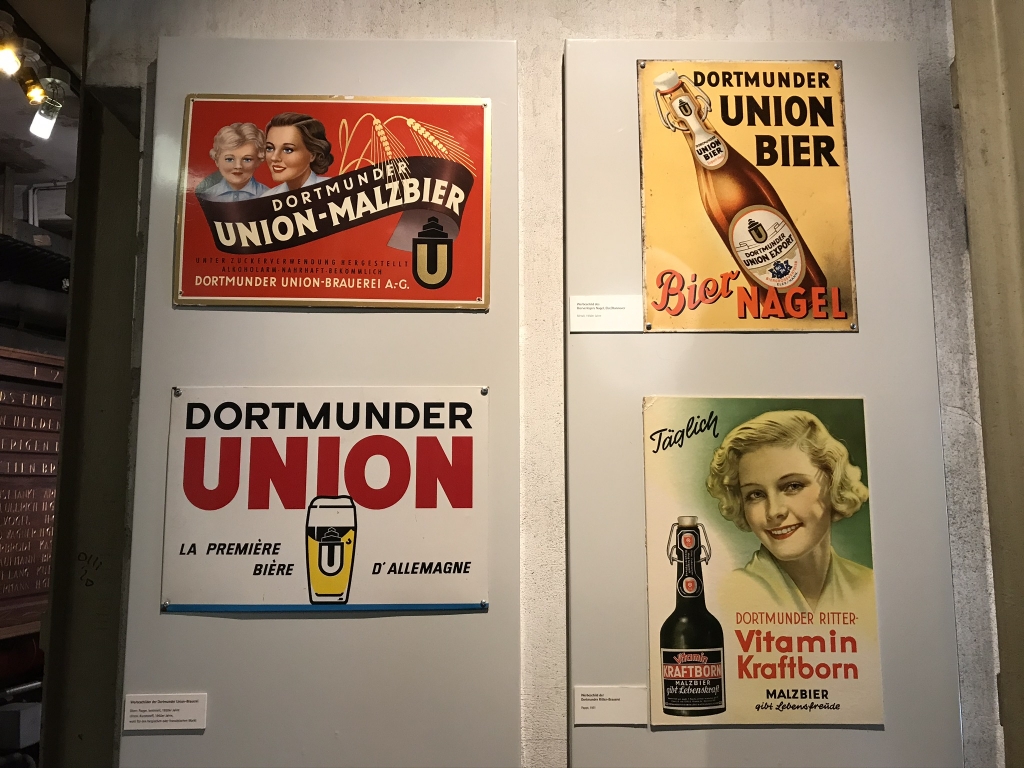Useless trivia: what’s the most populous metro area in Germany? Not city but metro (city + suburbs)? It’s not those of Berlin, Hamburg, or Munich, though those are the three biggest cities. The biggest metro is the Ruhr area, not based around a single big city but a cluster of smaller ones, the largest being Essen, Dortmund, and Duisburg. It's kind of like the American Rust Belt, in that its economy was historically based on industry and mining. What’s there to do there, for anyone just passing through? Not a whole lot, it seems, but it's a fine stop for a weekend while on the way somewhere else.
Saturday, Saturday 19, 2020
Throughout this entire vacation, Deutsche Bahn was having some serious issues all over its network. It started with my first ICE train ride, from Stuttgart to the station underneath Frankfurt Airport, and didn't get much better from then. I kept getting emails saying that the train I was on was going to be delayed, always followed by another saying everything was fine again and it would be on time. Then there was one more change: my connecting ICE train out of Frankfurt Airport would be leaving from a different track...but at the same time as scheduled.
This different track was nowhere near where I stepped off the first train. I don't know how long it took me to hike all the way there, but it was apparently too long because the train was already gone by the time I got to the track! Maybe I should've run? And what the hell was DB thinking, not at least delaying the train a few minutes so no one would miss the connection?
Just like the last time this happened, DB set me up with an alternate route. I had to wait another half hour for another ICE to show up which I rode from there to Duisburg.
I had lunch at the Duisburg station, a chicken baguette. Then where to go? My modified train ticket had me getting on the RE 1 bus to Essen, but a train, also numbered RE 1 was also going that route, so I went and bought a ticket and took that train because it seemed more convenient.
Word to the wise: a 1.70€ "EinzelTicket" is NOT sufficient to get from Duisburg to Essen, as I learned from a rather rude ticket checker. Here's your 60€ fine, but you don't have to talk to me like I'm a juvenile !"$%@ delinquent! Luckily for me, the place where I got kicked off the train was in Essen, where I wanted to go, though not the main station.
The first thing I had to do was hit up an ATM, which I found in a nearby shopping mall, to get more cash to make up for what I'd just handed over to the ticket checker. Next I had to figure out how public transit worked around here, which wasn't easy.
The local transit authority is called Ruhrbahn. Like with most other German metro areas, there's a commuter rail system, S-Bahn, linking high-traffic points throughout the area, while each city in the metroplex has its own light rail system called U-Bahn. At the nearest U-Bahn station I tried to buy a ticket at one of the machines but struggled to understand the fare system. There were, of course, different available tickets for different age groups (e.g. child and adult) and different time periods (e.g. 24 or 48 hours). But they were further divided into four "Preisstufen" (price levels), A, B, C, and D. But how do I know which price level to buy? There's no explanation on the machine! I did some googling on my phone and found that they've divided the Ruhr area into a number of districts, with price level A only being valid in whatever district you buy it in, D covering the entire Ruhr area, and B and C working in different distances in between. OK, that partially unravels the mystery, but how far would B and C take me?
If you are planning to be using public transit in the Ruhr area any time soon, pay attention, because I wished I had such a clear explanation laid out for me! At every U & S-Bahn station, you're naturally going to find a schedule and map posted on a bulletin board. At such boards in the Ruhr area you're also going to find a list of destinations throughout the area and exactly which price level ticket you need to get there from where you are currently. The posted list told me that from the center of Essen, one needs price level B to get to western and central Dortmund, but C for eastern Dortmund. I figured B should be sufficient so I got myself a 24-hour, B-level, adult ticket. I think it was something like 7€ and change.
OK, now I was starting to see why that ticket checker was so pissed at me for trying to get from Duisburg to Essen on 1.70€...
Finally with a legit train ticket in my wallet, I checked Atlas Obscura to see what around here was worth seeing. Essen's economy was once primarily based on coal mining, and one of the city's attractions today is a former mining complex. It is called Zollverein, which actually means "customs union," but used to be a coal mine. I took a short U-Bahn ride there.
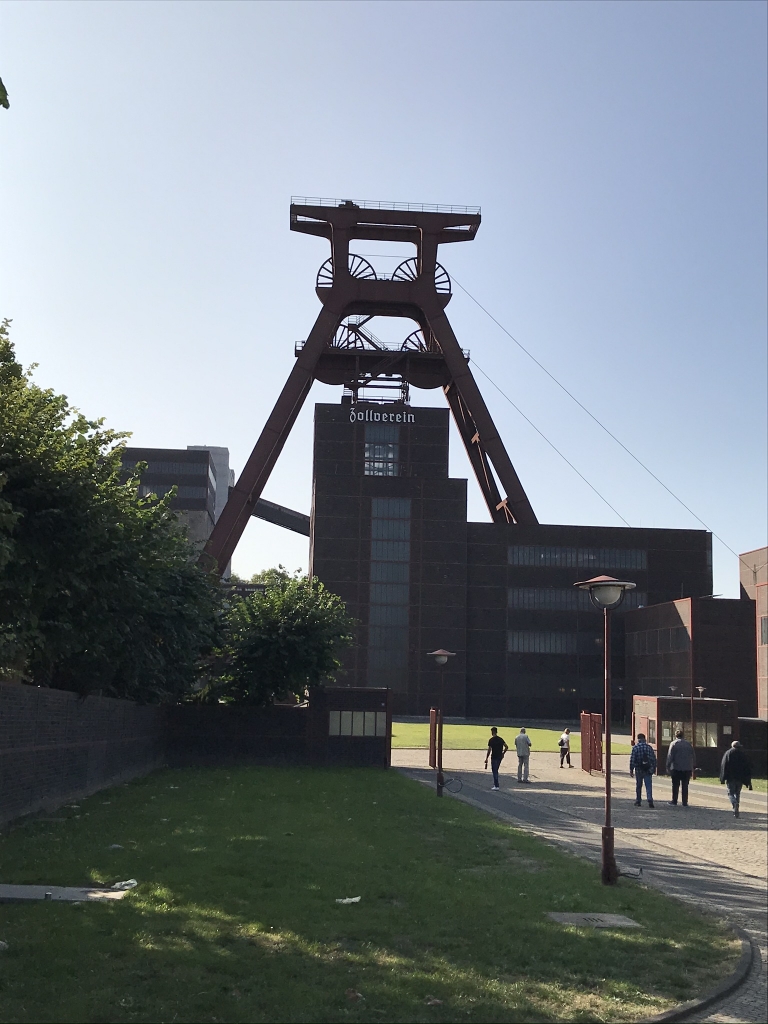
This massive construction has been converted into a multi-purpose space, like so many former industrial structures around the world. Part of it is now a museum, other parts have become restaurants, and yet others are artists' studios. It reminded me of the former Pearl Brewery in San Antonio, Texas, as well as Cannery Row in Monterey, California.
Most of it was about to close for the day at the time I was there, though. I was told that the museum was a half hour away from closing, so I just had a coffee and headed out.
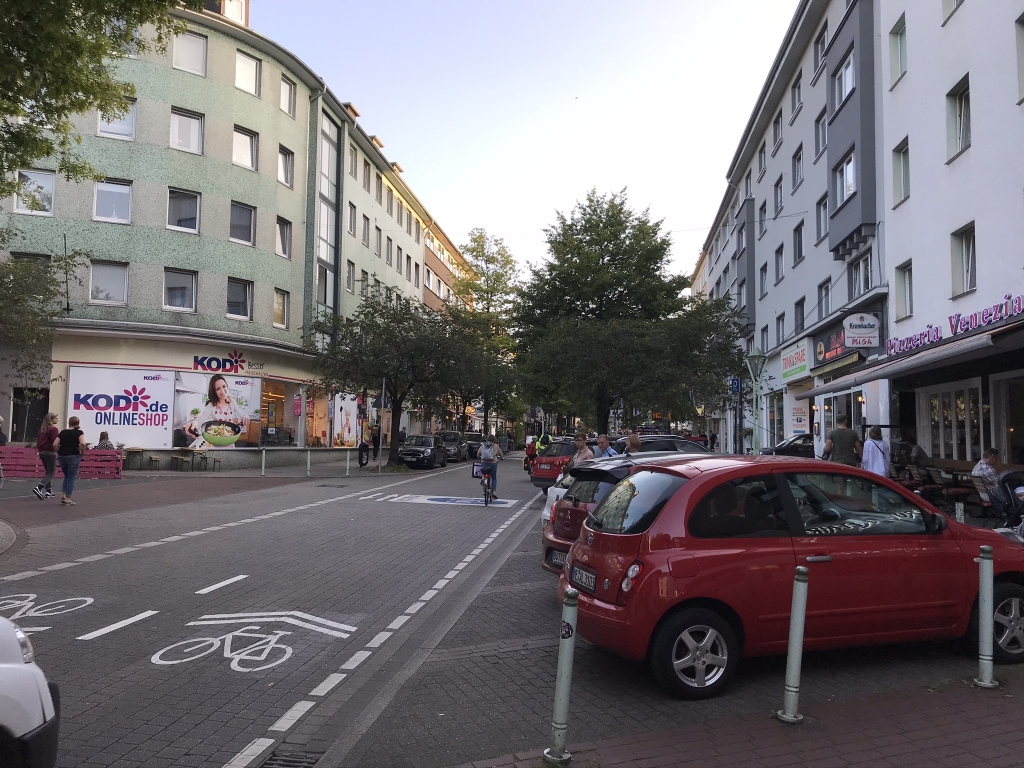
Most cities around here have a downtown street or two lined with stores and restaurants, kind of like a shopping mall only outdoors. Rüttenscheider Straße fills that function for Essen. This is where I was Saturday evening looking for dinner.
In every city I visit, I have to go to an Irish pub. Here in Essen I found a such a place called Fritzpatrick’s, which is on Rüttenscheider Straße. Along with my steak salad dinner, I drank a 30cl glass of Guinness Hop House Lager. I've had this once before and it's pretty good. I wonder if it's been exported to the US yet?
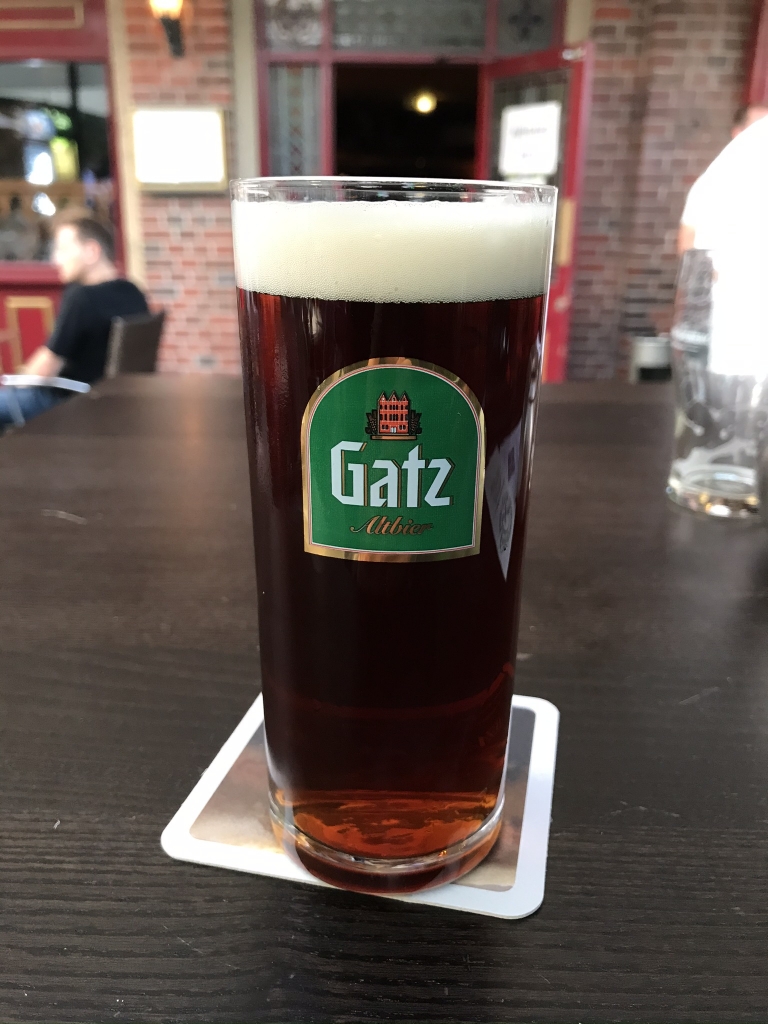
Also at Fritzpatrick's, I had 30cl of Gatzweilers Alt. Altbier is a style that originates in Düsseldorf, the state capital city which is just to the south of the Ruhr area. It's not particularly amazing but I do like it, I find it not too different from amber ales. Alt is also known for its rivalry with the Kölsch style from nearby Cologne, and between the two of them I prefer the Alt.
As the sun was going down I decided there was nothing left to do that day in Essen, so I should probably head to the next city over, Dortmund, and check into my hostel. The way to get there was via the S-Bahn line S1. Here I ran into the same problem I had been running into all over German rails this weekend. Are they shutting down tracks for construction all over Germany? This trip shouldn't have taken more than 40 minutes, but with all the irksome stoppages was stretched out into more than an hour.
Also, there was a ticket checker on this train. It turns out the ticket I had was thankfully the right one; ever since that incident in Duisburg, whenever I buy a public transit ticket I can't shake the little feeling in the back of my mind that I may have bought the wrong one.
a&o is a short walk from the train station. I checked in, locked my backpack up in my room, since I made sure to bring the lock I bought in Berlin, and then headed back out because I wanted to get a taste of Dortmund beer.
I'd read that Dortmund had briefly been the beer capital of Germany at one time. I found this surprising because as long as I've been alive, most people associate "German beer" with Munich macrobrews like Paulaner. When I first arrived in Dortmund I couldn't name a single Dortmund brew.
First I stopped at a bar called Glückshot, which seemed pretty empty for a Saturday night. I had a 50cl glass of Brinkhoff. I thought it was bitter, but not bad. I didn't stay at this bar, though, because I wanted to find someplace with a little livelier atmosphere.
My last stop of the night, then, was called Wenkers am Markt, which was on a central square called Alter Markt (old market). Here I first had a 50cl of Dortmunder Kronen. I liked this better than the Brinkhoff I had in the last place. So much that I had another 30cl of it!
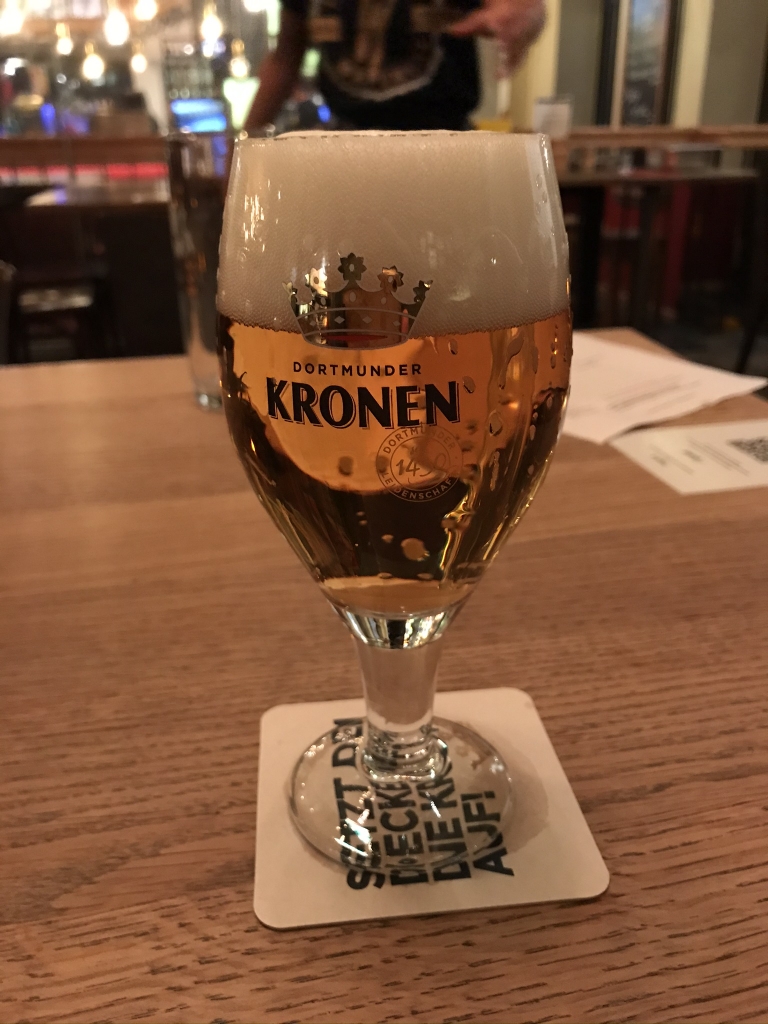
Delicious and photogenic.
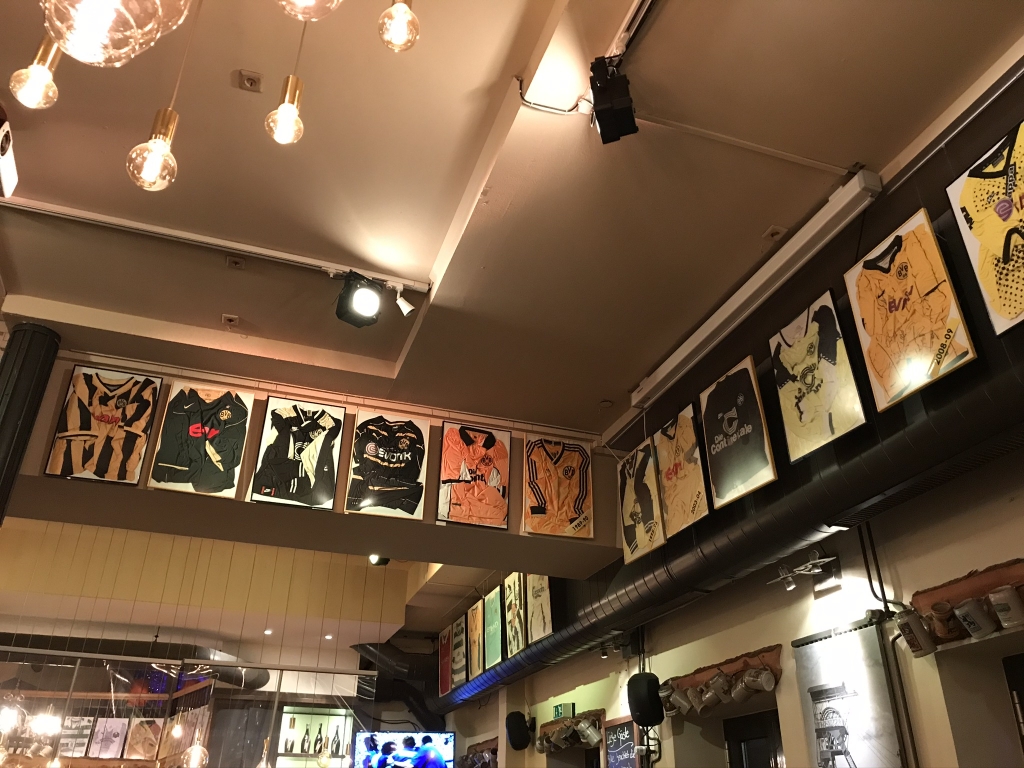
Most of Wenkers was decorated with several decades' worth of Borussia Dortmund jerseys. If that doesn't mean anything to you, Borussia Dortmund is the local Bundesliga soccer team who is known for their yellow-and-black colors.
Sunday, September 20, 2020
Sunday morning I walked downstairs from my hostel room, and just like at any a&o hostel, bought a breakfast token at the front desk and then went downstairs to redeem it. To my delight, the buffet was back! Unlike at my a&o stays in Salzburg and Hamburg earlier in the summer, it wasn't full service anymore, I could load up my bowl of müsli, put all the deli meat slices on my plate, and pick up all the fruits I wanted.
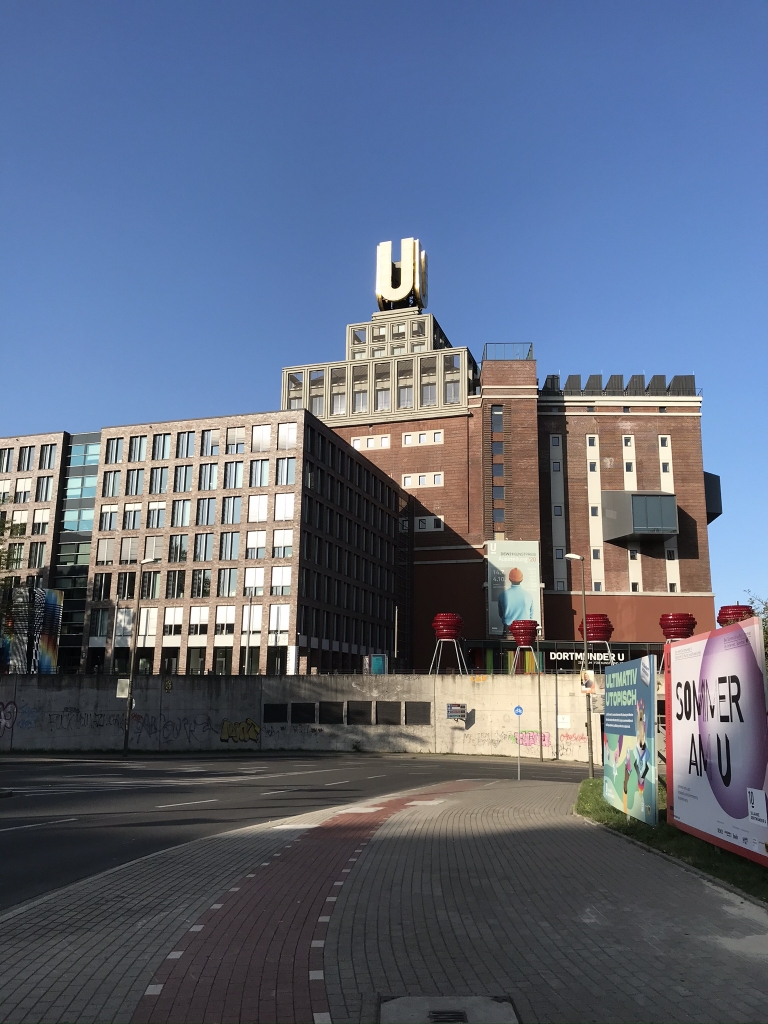
That morning I walked by this locally-famous building. This used to be the Union brewery, and today is a multi-purpose convention center.
Sunday is a day when a great many places are closed in Germany, but one nice diversion was open, though it opened at 10: das Deutsche Fußballmuseum, a huge museum dedicated to that sport that is called "football" on this side of the world but "soccer" where I'm from. It's right across the street from the train station. I'd already been to the National Football Museum in Manchester, UK five years earlier and found that worthwhile, so I thought this would be a good way to spend a few hours. I was not disappointed. It covers the whole history of the sport with a particular focus on the German national team and the national league, the Bundesliga. I won't get too deep into it here--I was in there for at least two hours, if not three--but I'll run through some highlights.
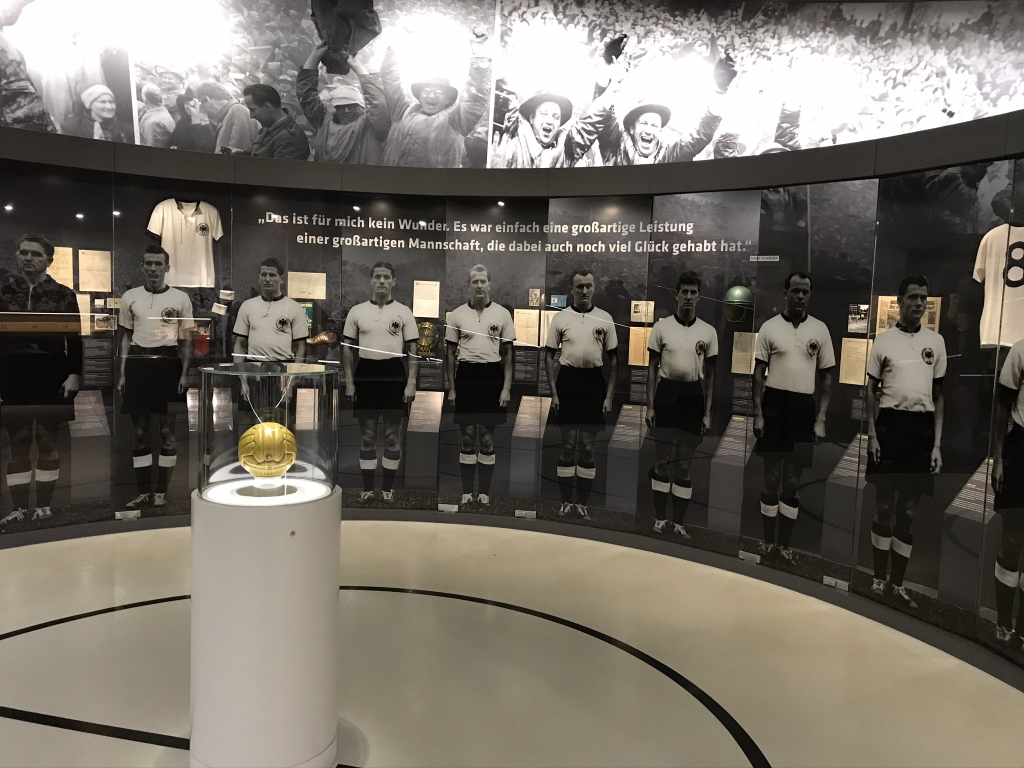
The first exhibits you see are about the "Miracle of Bern," that is, the 1954 World Cup final in Bern, Switzerland, in which West Germany improbably beat Hungary 3-2. Hungary at that time was widely considered the best national team in the world, with their legendary striker Ferenc Puskás, and had been undefeated in their last 31 matches. Everyone expected Hungary to win the final, which is why West Germany's victory was such an upset.
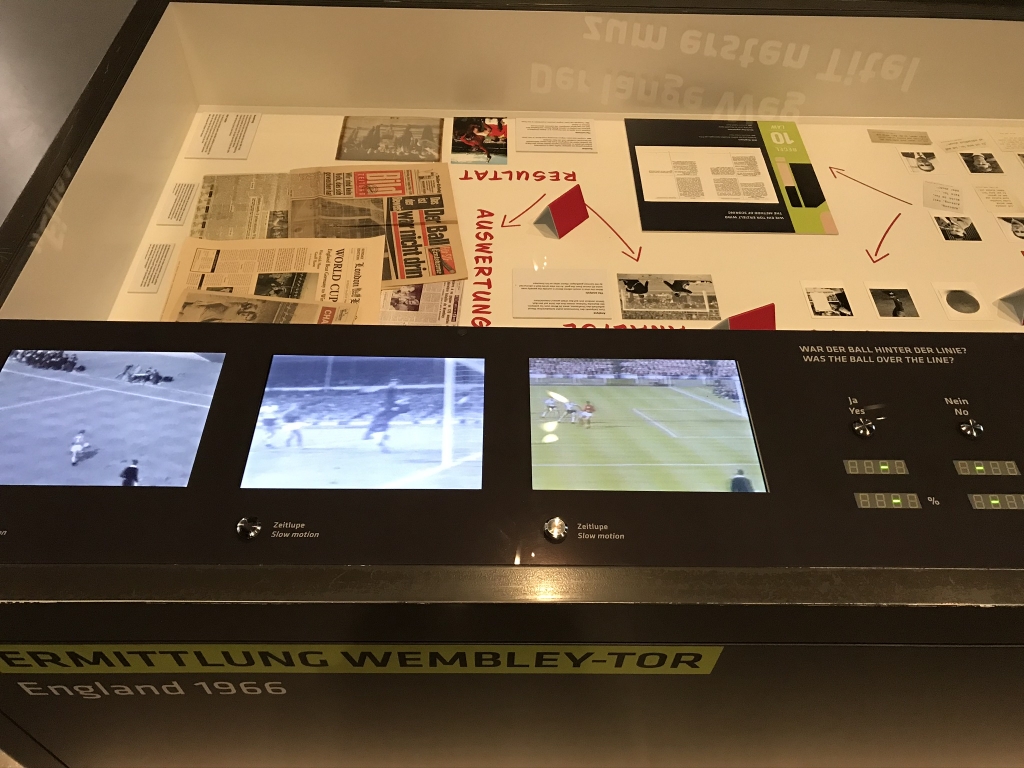
This is an interactive exhibit about the 1966 World Cup final in London's Wembley Stadium. More specifically, it's about a still-controversial tie-breaking goal that England's Geoff Hurst scored in extra time which made the score 3-2. The ball hit the cross bar on top the goal, and then bounced straight down onto the goal line. Did it actually cross the line? Here you can watch it from three different angles and judge for yourself. It looked to me like it crossed the line, just by a hair. The refs back then apparently agreed, but a great many fans in the decades since have disputed it. England won that match, and thus the Cup, 4-2.
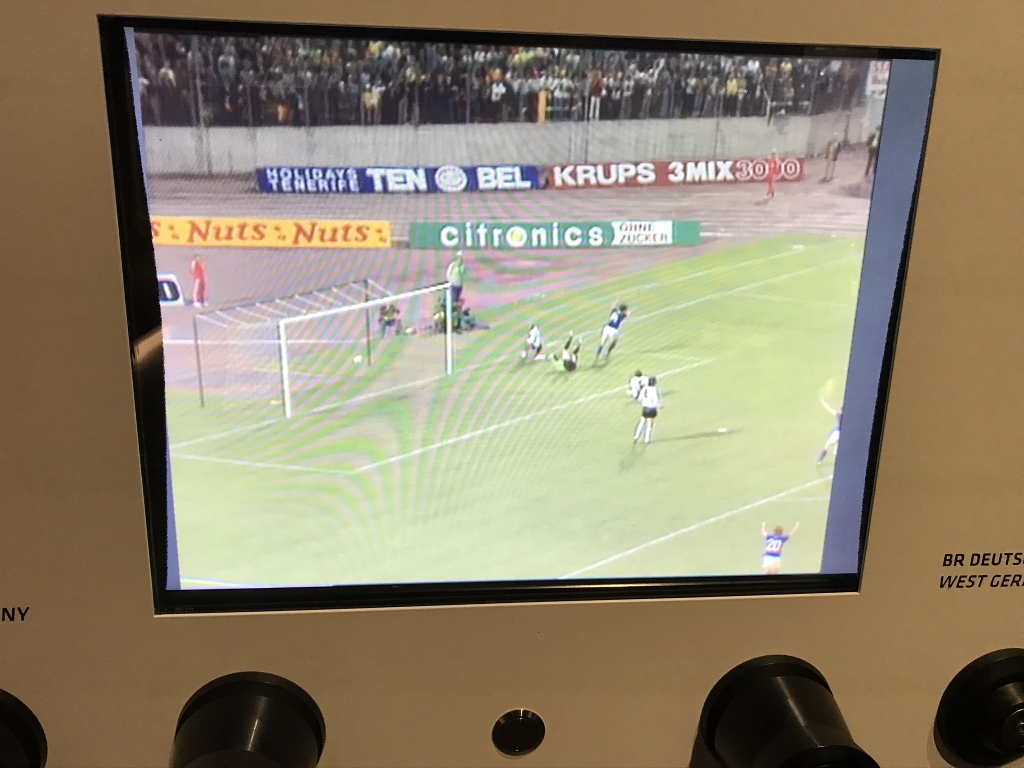
This is part of a larger exhibit about soccer in Communist East Germany. Their national team only ever qualified for one World Cup, 1974, which just happened to be hosted by their cousins in West Germany. During that whole tournament, East (in blue) and West (in white) actually played against each other only once, and despite having the inferior team, the East won 1-0 thanks to a goal from Jürgen Sparwasser. Here you can watch the footage of that goal, and listen to Eastern and Western announcers on different earphones.
Despite the Eastern propaganda victory from that goal and game, West Germany went on to win the whole Cup while East Germany never made it out of group stage. Sparwasser went on to defect to the West in 1988.
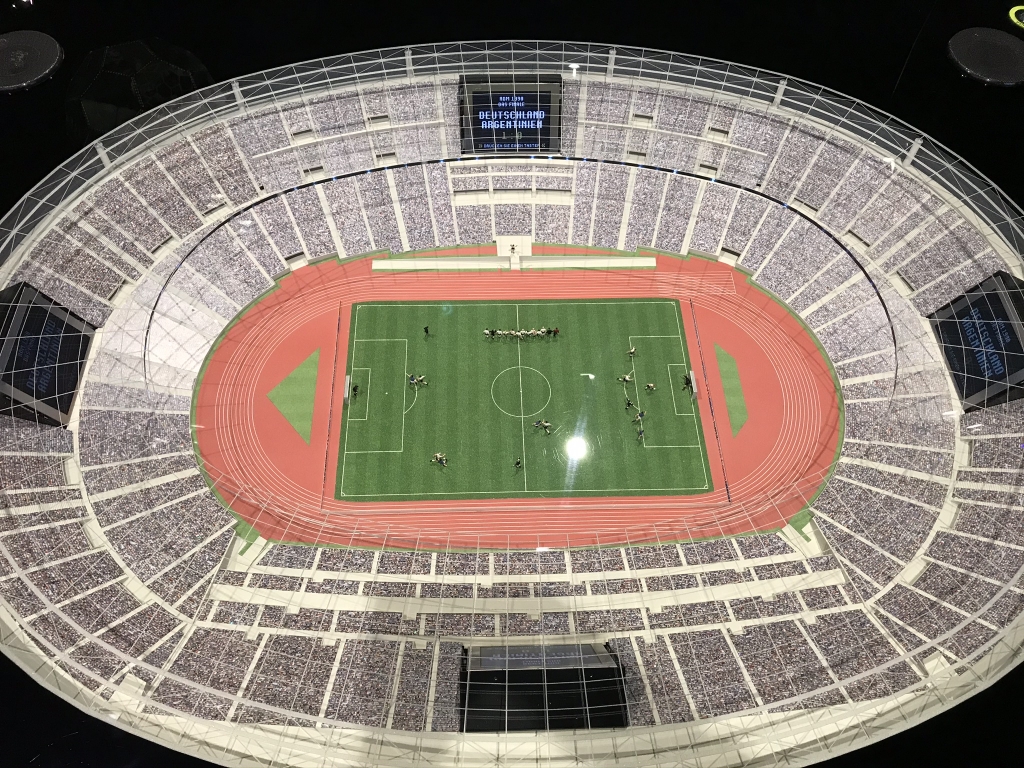
What I liked about this place was not only the interactive exhibits, but how each exhibit dedicated to a World Cup took an entirely different form from every other one. This one is for the 1990 World Cup final in Rome, in which West Germany, only three months before reunification, beat Argentina, who had their superstar Diego Maradona, 1-0. That was West Germany's third World Cup title. You can watch moments from that match on the different screens here.
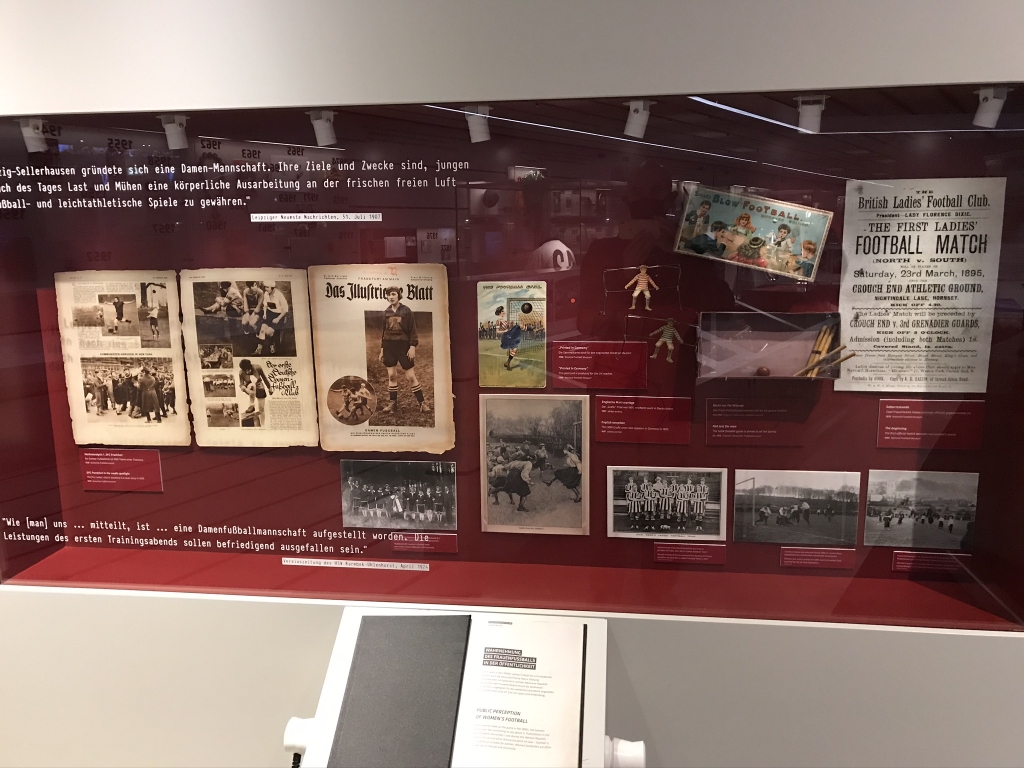
This part concerned the women's game, which has always existed in the shadow of the men's. What I did not know is that for a few decades in the early 20th century, women's leagues were actually banned. Authorities even got doctors to come up with pseudoscientific justifications for this, which usually boiled down to "it's too hard on their delicate bodies."
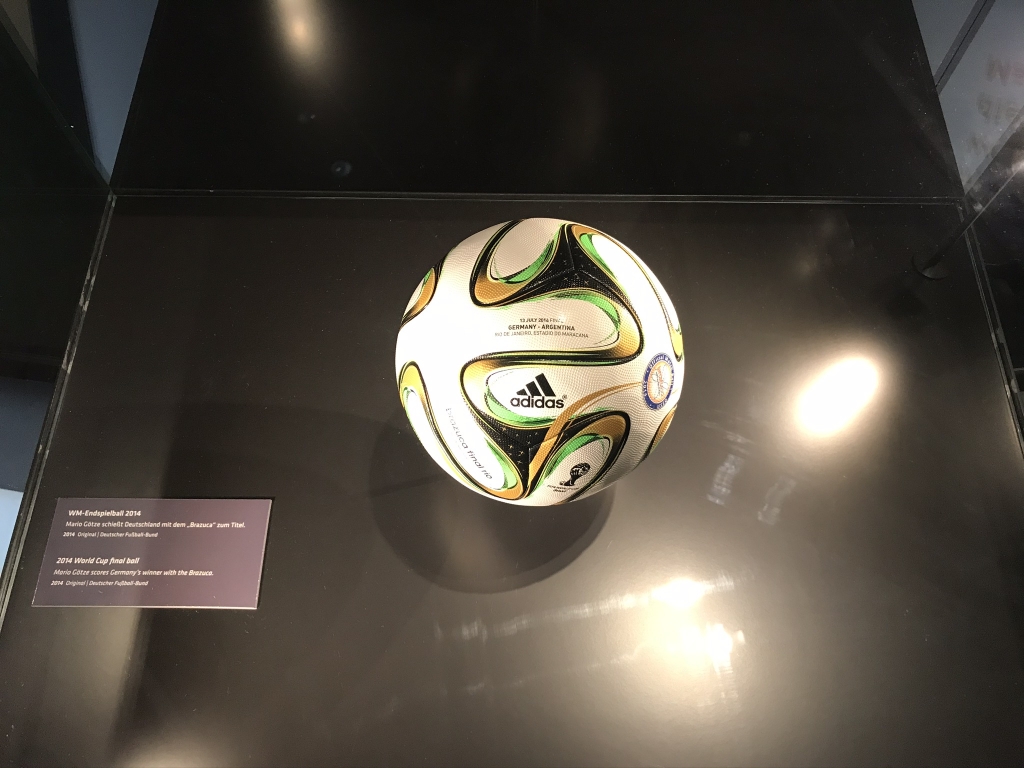
The biggest World Cup exhibit covered both 2010 (where Germany finished third) and 2014 (which Germany won). This is one of the balls from the 2014 final in Rio de Janeiro, in which Germany beat Argentina 1-0.
After that, there was an entertaining 15-minute movie you could watch in a small theater. The movie used some kind of holographic projection technology, so you seemed to be seeing three-dimensional holograms moving on the stage. Pretty cool. The movie itself seemed to involve current German stars talking to '50s coach Sepp Herberger about past great moments. German is not my first language so I couldn't quite follow everything (even if I can argue with a train ticket checker).
Next was a room which for me was a bit of an education, because it was about "systems theory." It showed a bunch of different strategies and how coaches have deployed players on the field throughout the decades. I took quite a lot of pics here for my own review later.
The last few rooms were about Germany's national league, the Bundesliga ("Federal League"). Originally this was only the West German league, which expanded to the former East after reunification.
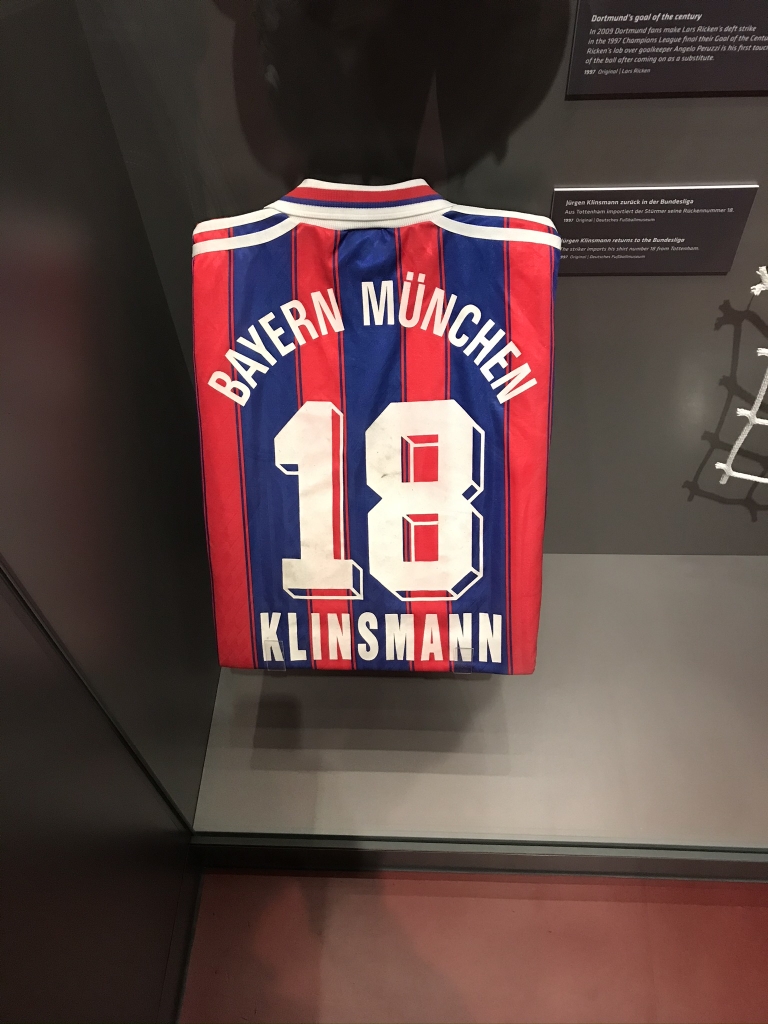
Here's Jürgen Klinsmann's jersey from when he was playing for Bayern Munich in the '90s. Klinsmann, of course, later went on to be the head coach of Team USA in the mid-2010s.
Lunch at the museum was unexpectedly good, considering this was merely a museum's café. It was similar to a buffet but full-service, that is, you have to tell someone behind the bar what size bowl you want and what to put in your bowl. I had a small bowl filled with some delicious, hot beef and vegetables.
Now, there was one other museum I wanted to see in Dortmund, the Brewery Museum. I'm always up for any kind of brewery tour or museum related to beer. I took the U-Bahn to the Lortzingstraße stop and it was a short walk from there.
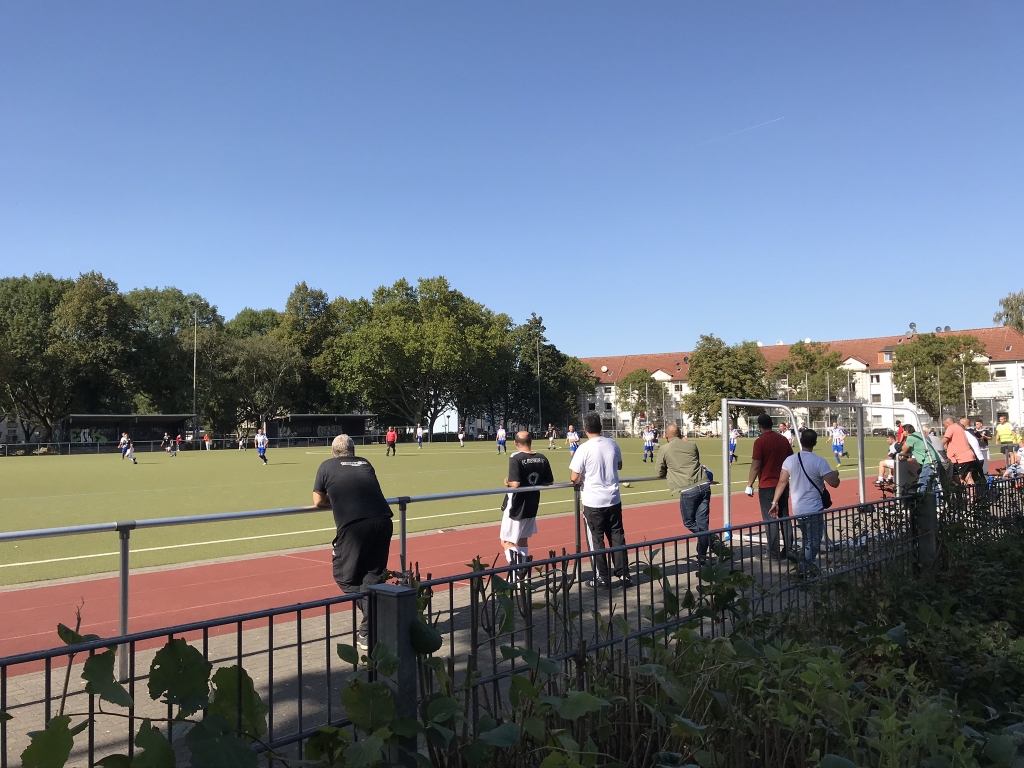
While walking toward the museum I saw this amateur match going on. After all that time in the Fußballmuseum I had to stop and watch this for a few minutes.
The Brewery Museum was...OK. After that deep dive into brewing I took at the Stiegl Brewery in Salzburg, this felt like a cut-rate rehash of that. But it was free of charge, so you still get more than what you pay for! This was really just another wall-o'-text museum which was a relatively quick (compared to Stiegl) stroll through the brewing process and the history of brewing in Dortmund. This city has long been the home of macrobreweries like Union, Kronen, and DAB, and during the 1950s these companies exported like crazy all over the world. Because of this, during that decade, the most-drunk German beers around the world were all Dortmund beers, giving the city a brief run as the beer capital of Germany. Those days are long past but it's still a little source of local pride.
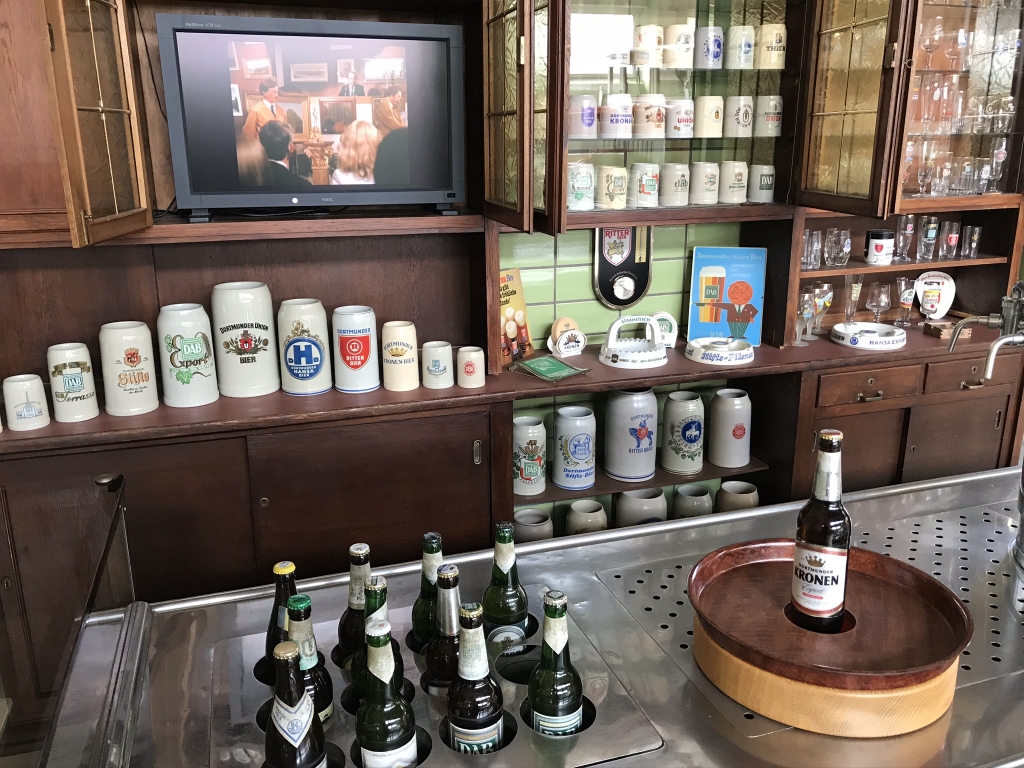
This part was a little entertaining. On this TV you could watch vintage ('60s, '70s, and '80s) ads for various beers. You pick which one to watch by placing specific bottles on that tray on the right.
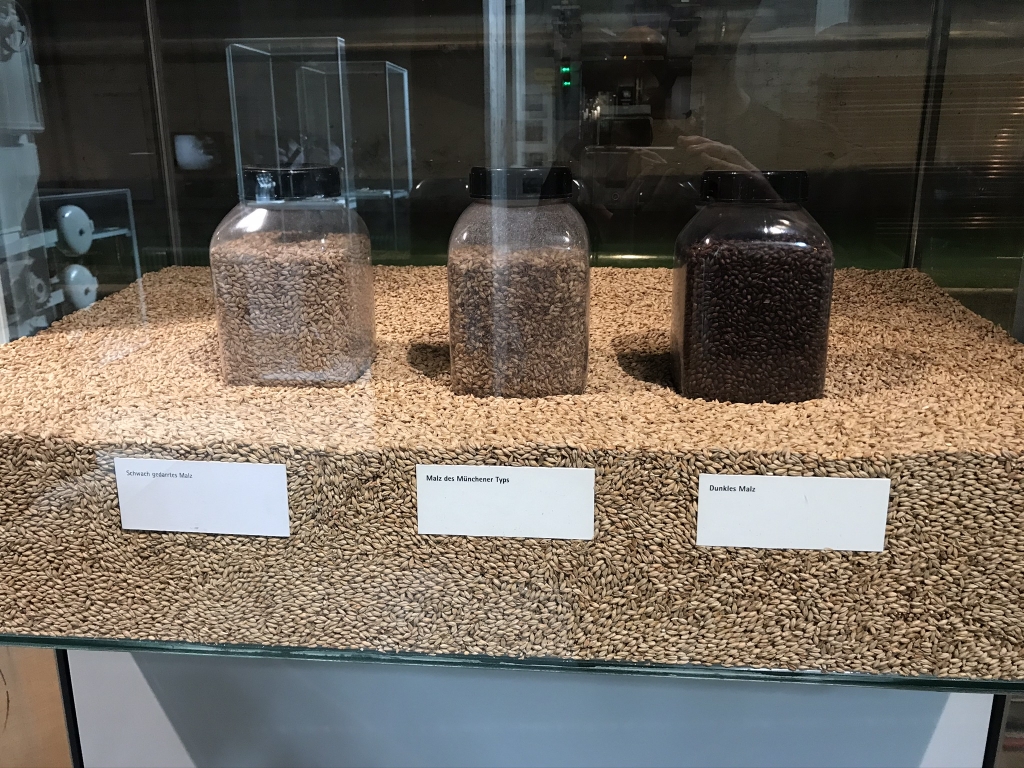
Here's some malt, in case we've forgotten from Stiegl what it looked like.
At the end there was some bottled beer for sale. Even though I was trying to take it easy on alcohol that day, because this whole tour had been free, and I didn't want to be a cheap ass, I bought a 30cl bottle of Union. It was only a single Euro! I thought it tasted pretty good, too.
One other note: they wouldn't let me drink inside the building so I had to take it outside. One difference between the US and Germany I don't think I've mentioned before is that in Germany, it's totally legal to openly drink alcohol out of bottles and cans in public spaces not in a bar or restaurant. It's extremely common to see people in Germany drinking beer out of an uncovered bottle while walking down the street or riding public transit. So here I was finally doing this for the first time, walking down a street while sipping a beer. I've really gone native now.
Dortmund also has a TV tower, like so many other cities I've visited on both sides of the Atlantic. Like all of those, it too has an observation deck on top. Since I never bothered to go up into Düsseldorf's, I put off Berlin's until I ran out of time, and I simply haven't gotten around to doing Stuttgart's, I really wanted to do Dortmund's.
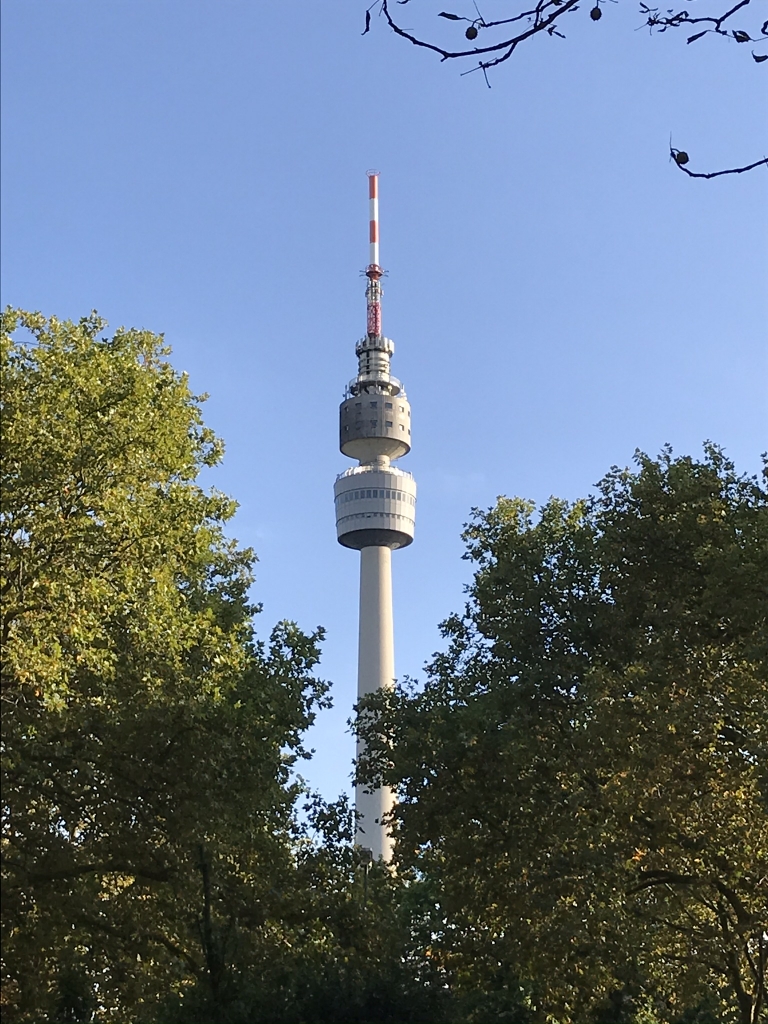
It's south of downtown in a public park called Westfalenpark. And guess what? It's closed! Stupid pandemic!
For dinner I was back at the Old Market square where I found an upscale restaurant called Zum Alten Markt ("On the Old Market"). I really wanted to eat a lot of fish on this trip and I finally started here, with a Störtebecker salad which was full of it. I washed that down with the only other beer I had that day, and the last Altbier I had during the trip, 30cl of Schlösser Alt. I would recommend this restaurant.
So that was das Ruhrgebiet. Like I said before, there isn't a whole lot for visitors to do here, despite it being home to millions of people, but there is enough to keep you occupied for a weekend. I suppose that's another way it's similar to our Rust Belt cities. Other than the TV tower in Dortmund and a climbable tetrahedron scuplture in Essen, I don't feel like I really missed anything important. In happier, disease-free times, I'd probably try to catch a Borussia Dortmund or Schalke 04 match, or hit up any of the fairs and such that were all cancelled this year, like the food fest Essen Genießen which was supposed to be going down when I was there. If you're going to be in the area and are looking for things to do and see, I think what I've written here just about covers it.
This was only the end of the beginning of this adventure. The next morning, I would be setting out for Denmark.
Other articles in this series:
- A Weekend in the Ruhr
- A Night in Odense and a Railway Museum
- Two Days in Copenhagen
- Passing through Gothenburg
- Ending the Trip in Kiel and Hamburg
